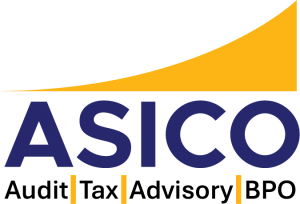- About Us
Overview
We leverage our unmatched expertise and experience to serve our clients to the best of our capabilities.
- Our People
- Our Services
- Industries
- Careers
- Insights
- Events & Gallery
- About Us
Overview
We leverage our unmatched expertise and experience to serve our clients to the best of our capabilities.
- Our People
- Our Services
- Industries
- Careers
- Insights
- Events & Gallery
Education and Health
Health
The pharmaceutical industry in Bangladesh is highly advanced, producing a wide range of medications, including complex products such as insulin, hormones, and anticancer drugs. It is the second largest revenue generator in the country, with total pharmaceutical exports amounting to USD 169 million. Local pharmaceutical companies export to 151 countries, with Sri Lanka being the predominant destination. The industry has shown progress despite economic challenges and caters to 98% of the nation’s medicinal demands
The government’s decision to establish an API Park in Munshiganj, covering a 200-acre site, is a proactive step. The API policy aims to reduce reliance on imported raw materials and increase API export revenue. With 27 companies securing plots within the API Park, including pioneering enterprises like ACME Laboratories and Healthcare Pharmaceuticals, the industry is poised for significant growth. The NBR’s issuance of a Statutory Regulatory Order (SRO) providing conditional tax benefits and proposed reduction in tax rates for imported APIs demonstrate the government’s support for the pharmaceutical sector. Continued support and the right incentives are needed to accelerate API production, fostering a flourishing pharmaceutical sector driven by increasing demand for medication.
The domestic pharmaceutical industry fulfills 98% of the nation’s demand and exports products to 150 foreign markets, including developed nations. It remains strong in the face of economic and political uncertainties. Adherence to international standards, regulatory approvals, and expanded medicine exports are significant developments. The Middle and Affluent Class (MAC) population is projected to reach 17% of the total population by 2025, up from 7% in 2015, leading to increased pharmaceutical demand. Year-on-year sales increased by 9.9% in FY23, reaching $X billion. The sector is experiencing increased exports, especially in the US, Australia, and the European Union, indicating a favorable outlook for the current fiscal year.
The domestic pharmaceutical industry fulfills 98% of the nation’s demand and exports products to 150 foreign markets, including developed nations. It remains strong in the face of economic and political uncertainties. Adherence to international standards, regulatory approvals, and expanded medicine exports are significant developments. The Middle and Affluent Class (MAC) population is projected to reach 17% of the total population by 2025, up from 7% in 2015, leading to increased pharmaceutical demand. Year-on-year sales increased by 9.9% in FY23, reaching $X billion. The sector is experiencing increased exports, especially in the US, Australia, and the European Union, indicating a favorable outlook for the current fiscal year.
Our experienced team can help you:
Audit and assurance services
Explore market entry and expansion opportunities
Seek investment opportunities and finance
Buy/sell due diligence, valuations, and mergers and acquisitions
Evaluate debt and equity levels
Review the economic viability of a business or project
Consider succession and ownership transition options
Identify government grants and concessions
Understand government climate change initiatives
Identify areas to improve performance
Income tax and VAT services
Comply with reporting and regulatory obligations
Important industry links:
- Directorate General of Health Services (DGHS)
- Ministry of Health & Family Welfare
- Registrar of Joint Stock Companies And Firms (RJSCF)
- Bangladesh Investment Development Authority (BIDA)
- Bangladesh Securities and Exchange Commission (BSEC)
- Pharmacy Council of Bangladesh
- World Health Organization
- Ministry of Education
- University Grants Commission of Bangladesh
